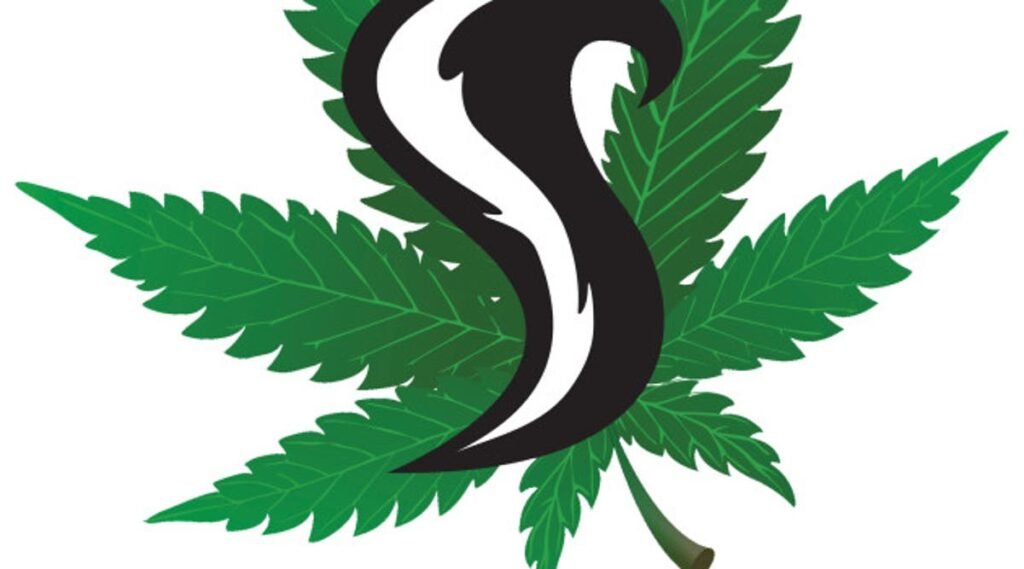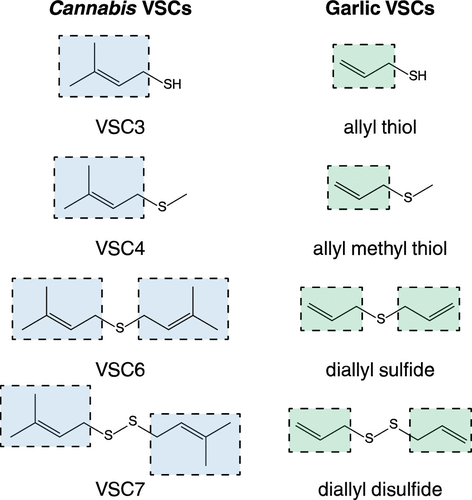Last Week In Weed Issue 48
Published December 6th 2021
In this week’s issue of Last week in Weed. We’ll be looking at UAE relaxing its laws on cannabis for tourists, Scientists discover the origins of the ‘skunky’ smell of cannabis, and new research suggests that cannabis drug-driving laws are flawed, outdated, and unscientific.
UAE relax rules for cannabis for tourists
Last week saw the United Arab Emirates (UAE) President Sheikh Khalifa bin Zayed Al Nahyan announce what is being called ‘the biggest change to UAE laws in its history.’ The news revealed that the Arab nation would be reforming its drug laws and shifting focus from punishment to rehabilitation.
These updates to the country’s drug laws will come into effect on January 2nd, 2022. They include reducing mandatory minimum sentences for first-time offences, ending mandatory deportation of foreigners caught with/on drugs, and a shift in focus from punitive incarceration to rehabilitative incarceration in ‘secure detention centres’ that offer ‘treatment’ and ‘education’.
“We can clearly see a recognition of the need for a coordinated approach that considers criminal justice and public health in regards to using drugs. While justice is at the heart of the new law, we can also see how the issue of using drugs is being looked at as an illness rather than a crime.” – Dr. Hasan Elhais, Al Rowaad Advocates
The announcement was made as part of the country’s celebrations marking half a century since its formation. In the hopes of boosting tourism and making the oil-rich nation a more attractive prospect to international investors.
The UAE has slowly been reducing the penalties for drug possession over the last several years. Five years ago the minimum sentence for first-time small-scale possession of drugs like cannabis was four years in prison. This was reduced down to two years in 2016 and under these reforms will reduce further to three months.
This is quite a U-turn in policy for the UAE. Until these rule changes, even trace amounts of cannabis could see a traveler who is simply passing through an airport in the country incarcerated in prison for several years. The new rules will see cannabis-infused products forfeited or seized at the border and destroyed by customs instead of detaining and prosecuting the traveler.
These wide-ranging reforms are actually rather progressive for the middle eastern monarchy that has previously arrested people for simply having THC in their system. Unfortunately, these reforms come a little too late for British man Billy Hood. Who was recently sentenced to 25 years in prison for possession with intent to supply four small bottles of a Synthetic Cannabinoid Receptor Agonist SCRA).
His sentence has since been reduced by 15 years at the start of this month after a somewhat successful appeal. The court in Dubai acknowledged and accepted that he “unintentionally possessed” and had no intention to supply the oil to others. Hopefully, these law changes will allow for further appeals and ultimately his timely release back to the UK and his family.
Scientists discover the ‘skunk’ smell of cannabis
We have so far identified over 200 different aromatic compounds in cannabis. Yet for years now I have sensed (see what I did there?) that there was a common smell that pervaded all cannabis. That pungent skunky smell that emanates from our favourite plant has long been put down to an expression of a cultivar’s particular terpene profile. However, new research published by the American Chemical Society claims to have finally cracked the root of this evasive aroma.
Last week a paper titled ‘Identification of a New Family of Prenylated Volatile Sulfur Compounds in Cannabis Revealed by Comprehensive Two-Dimensional Gas Chromatography’ was published. In it a team of academics and researchers claim to have discovered a new class of chemical compounds present in cannabis that is responsible for its iconic and unmistakable smell.
In their research, the team analysed 13 different cannabis cultivars to attempt to identify what gave each of them their distinct smell, taste, and effect. The cultivars selected were; Bacio Gelato, Clone Guy OG, Gelatob, Area 41, Jetlag OG, Gushers, Wifi Cak, Apple Fritter, Chem 91, GelatoB (Listed twice in the paper – likely a secondary chemovar) Cali Berry, Gouda Berry, and Black Jack.
During their study a new class of Volatile Sulphur Compounds (VSC) never before seen in nature was detected and cataloged, although these compounds do closely match similar ones found in garlic. The team identified several of these unique VSC compounds in the cultivars they tested and labeled them as; VSC3, VSC4, VSC5, VSC6, and VSC7.
The team’s research suggests that these compounds develop at a similar time to terpenes during the plant’s production schedule. Its production also intensifies closer to the end of the flowering cycle, as with terpenes. The team found that the measurable levels of VSCs began to drop after just 10 days in storage compared to a much longer window for certain terpenoid compounds such as cannabinoids and terpenes.
“The structural similarities between VSCs in cannabis and garlic thus warrant further investigation to determine if the former possess similar health benefits to those of the latter” – Research Authors
Although they are all classified as ‘Volatile Sulphur Compounds’ (VSC) cannabis VSCs seem to volatilise a lot faster than those found in Garlic and other flora. It is already known that the similar compounds found in garlic are not just responsible for its great taste and aroma. They are also believed to be the source of its associated health benefits such as improving immune and cardiovascular function. As well as fighting infection. Indeed garlic is such a powerful antibacterial agent that it was called ‘Russian Penicillin’ during WW2.
We’re still in the early days of research when it comes to cannabis and the myriad other mysterious compounds and benefits it has yet to reveal to us. So I’d say it’s not too far of a leap to say that once understood these compounds could hold great potential therapeutic application in the future.
New research confirms that cannabis drug-driving laws are outdated and unscientific.
Research conducted by the University of Sydney’s Lambert Initiative for Cannabinoid Therapeutics, Australia’s ‘first in the field’ research project investigating the medicinal applications of cannabinoids suggests that drug-driving laws are not fit for purpose.
University researchers conducted a metadata analysis of ‘all available data’ relating to driving performance and cannabis compound concentrations in blood and saliva. Their results indicated that both secretions are poor indicators of intoxication or impairment.
“Higher blood THC concentrations were only weakly associated with increased impairment in occasional cannabis users while no significant relationship was detected in regular cannabis users. This suggests that blood and oral fluid THC concentrations are relatively poor indicators of cannabis-THC-induced impairment.” – Lead author Dr Danielle McCartney
To conduct their investigation the team studied 28 relevant publications relating to cannabis consumption and then collected and correlated blood/saliva sample data for analysis. They used this data to categorise consumers into frequent (weekly or more often) and infrequent (less than weekly) groups.
They observed that the infrequent group showed ‘some significant correlations between blood and oral fluid THC concentrations and impairment.’ Although the team did clarify that the majority of ‘these relationships were “weak” in strength.’ When observing the frequent consumers they found that ‘no significant relationship between blood THC concentration and driving performance.’
“THC concentrations in the body clearly have a very complex relationship with intoxication. The strong and direct relationship between blood-alcohol concentrations and impaired driving encourages people to think that such relationships apply to all drugs, but this is certainly not the case with cannabis”
“A cannabis-inexperienced person can ingest a large oral dose of THC and be completely unfit to drive yet register extremely low blood and oral fluid THC concentrations. On the other hand, an experienced cannabis user might smoke a joint, show very high THC concentrations, but show little if any impairment.”
“We clearly need more reliable ways of identifying cannabis impairment on the roads and the workplace. This is a particularly pressing problem for the rapidly increasing number of patients in Australia who are using legal medicinal cannabis yet are prohibited from driving. “The increase in legal recreational use of cannabis across multiple jurisdictions worldwide is also making the need for reform of cannabis-driving laws more urgent.” – Professor Iain McGregor, Academic director of the Lambert Initiative
This research raises a lot of questions. Not least about the efficacy, legitimacy, and legality of drug-driving laws around the world. Unlike alcohol, the presence of THC in your blood isn’t an accurate indicator of intoxication/ This relationship makes classification of impairment rather difficult through conventional means. Something I doubt will surprise any cannabis consumers.
This complex relationship led the UK government to simply change the law in 2015. They removed the legal requirement to prove impairment, instead replacing it with an arbitrary and rather low THC-blood level limit of 2ug per litre. This unscientific and idealogical decision was highlighted in October by UK Cannabis law reform organisation Seed Our Future.
Read the Seed Our Future Cannabis and Driving – The Facts document here
The report ‘Cannabis and Driving: The Facts’ produced by Seed Our Future founder Guy Coxall shows how even ‘legally’ prescribed patients can fall foul of the law. The group is now calling for
THC to be moved back from section five to section four of the Road Traffic Act 1988 (RTA). This would reintroduce the need for impairment to be proved not just an arbitrary THC blood level detected.
“It’s great to see so many global academic reports confirming and expanding upon the findings of Seed our Future’s report in that saliva and blood tests for THC do not correspond to driving impairment. “The Road Traffic Act is clearly wrong in relying wholly on blood tests to secure a conviction where there is no evidence of impairment nor a road safety risk.
“We will campaign for the law to be reverted back to Section 4 of the Act, where evidence of impairment is required, and for a National education campaign to inform those who use cannabis responsibly to self assess their ability to drive safely. Unjust laws must be corrected to serve the public interest.” – Guy Coxall, Seed Our Future
Written By Simpa For The Simpa Life





